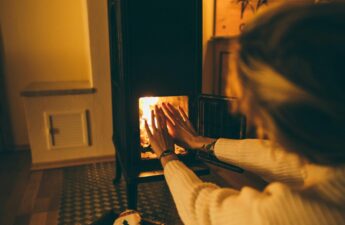
From the Washington State Department of Health
Planning to get together with family and friends? Whether you’re traveling or hosting, you should consider adding at-home COVID-19 tests to your checklist.
At-home tests are a simple way to provide a little peace of mind for your gathering. They’re quick, painless, portable, and priced at $25 on average– making them an easy option for a variety of occasions.
Here are some of the basics you should know about at-home testing.
What is an at-home test?
An at-home test is one of several options for testing for the COVID-19 virus. Like the name suggests, you can do this test at home — or anywhere. This kind of test is also known as a self-test or an over-the-counter (OTC) test.
You do the test on yourself and read your own results. You can also help your kids or other family members take an at-home test.
There are nearly a dozen over-the-counter tests authorized by the FDA for emergency use. Most at-home tests are rapid (antigen) tests. These rapid tests provide results within 15–30 minutes. There are also PCR at-home tests, which require you to send your sample to a lab; this takes at least a day to get results. These are technically known as “at-home collection tests.”
When is at-home testing a good option?
At-home tests can be used for people ages two years and older. An at-home test might be a good option if:
- You have COVID-19 symptoms, or you have been exposed or potentially exposed to someone with COVID-19.
- You don’t have COVID-19 symptoms, but you want to confirm you’re not carrying the virus before you attend a gathering or event. This is especially important before you gather with unvaccinated people (including young children), older people, those who are immunocompromised, or people at risk of severe disease. In this scenario, you should take a rapid at-home test no more than 24 hours before the event.
- You’re preparing to travel, or returning from travel: You can use at-home tests to follow the Centers for Disease Control’s (CDC’s) domestic travel testing recommendations for unvaccinated people. You should complete the test 1–2 days ahead of travel, and 3–5 days after returning from travel. The CDC will accept some at-home tests for international travel testing requirements. However, it’s best to double check the guidelines of your airline and the countries you’re traveling to and from.
How can I get an at-home test?
You should be able to find at-home testing kits at pharmacies across the United States (including Walgreens, Bartell Drugs, CVS, Walmart, Safeway, and Albertsons). Additionally, you can order them online directly through retailers. You do not need a prescription.
Supply shortages were reported during the last COVID-19 surge, so the best test is the one that’s available to you. That said, new options have recently hit the market and stores have been adding more supply in anticipation of possible COVID-19 surges.
Kits typically cost around $25 and include two tests, swabs, testing solution, and instructions. This is more expensive than getting tested with a health care provider or at a testing site, where tests are usually offered cost-free for people who have symptoms or have been in close contact with someone who’s tested positive.
The Washington State Department of Health is working to expand access to at-home tests across Washington. Depending on where you live in Washington, you may already be able to get a free at-home test kit through your local health department or the Say Yes! Covid Test program. And, starting early next year, at-home tests will be available for free for everyone in the United States.
What should I expect?
It’s important to follow all the instructions inside the kit for the most accurate results. Several brands also offer video instructions. For more best practices, check out the CDC’s tips for at-home testing.
- A positive test result means that you likely have a current infection, and you should isolate and inform close contacts. Report your results through the WA Notify app, or to Washington’s COVID-19 hotline at 1–800–525–0127. This prevents the disease from further spreading in our communities. The phone line is open Monday from 6 a.m. to 10 p.m., and Tuesday to Sunday (and observed holidays) from 6 a.m. to 6 p.m.
- A negative test result means that you may not be infected — though it’s not certain. Many at-home tests instruct people to test twice within a few days to increase accuracy.
- Sometimes the test can show inaccurate results or an error. You may not have done the test correctly, or the test may have malfunctioned. If this happens, check the test instructions and contact the manufacturer for help.
While at-home tests are convenient, they are not 100% reliable, especially for those who do not have symptoms. That’s why it’s important to protect yourself from COVID-19 in other ways — like getting your COVID-19 vaccine and booster, wearing your mask in public, washing your hands, enabling WA Notify on your smartphone, and avoiding large gatherings.
What are some other testing options?
There are several testing options here in Washington, including some that are cost-free. Learn more about the types of tests and where to get tested at doh.wa.gov/testing.
More Information
This blog is accurate as of the date of posting. Information changes rapidly, so check the state’s COVID-19 website for the most up-to-date info at coronavirus.wa.gov. You can also sign up to be notified whenever we post new articles.
The COVID-19 vaccine is now available to everyone 5 and older. For more information about the vaccine, visit CovidVaccineWA.org and use the vaccine locator tool to find an appointment. The COVID-19 vaccine is provided at no cost to you.
WA Notify can alert you if you’ve been near another user who tested positive for COVID-19. Add WA Notify to your phone today: WANotify.org
Answers to your questions or concerns about COVID-19 in Washington State may be found at our website. You can also contact the Department of Health call center at 1–800–525–0127 and press # from 6 a.m. to 10 p.m. Monday, and 6 a.m. to 6 p.m. Tuesday — Sunday and observed state holidays. Language assistance is available.


